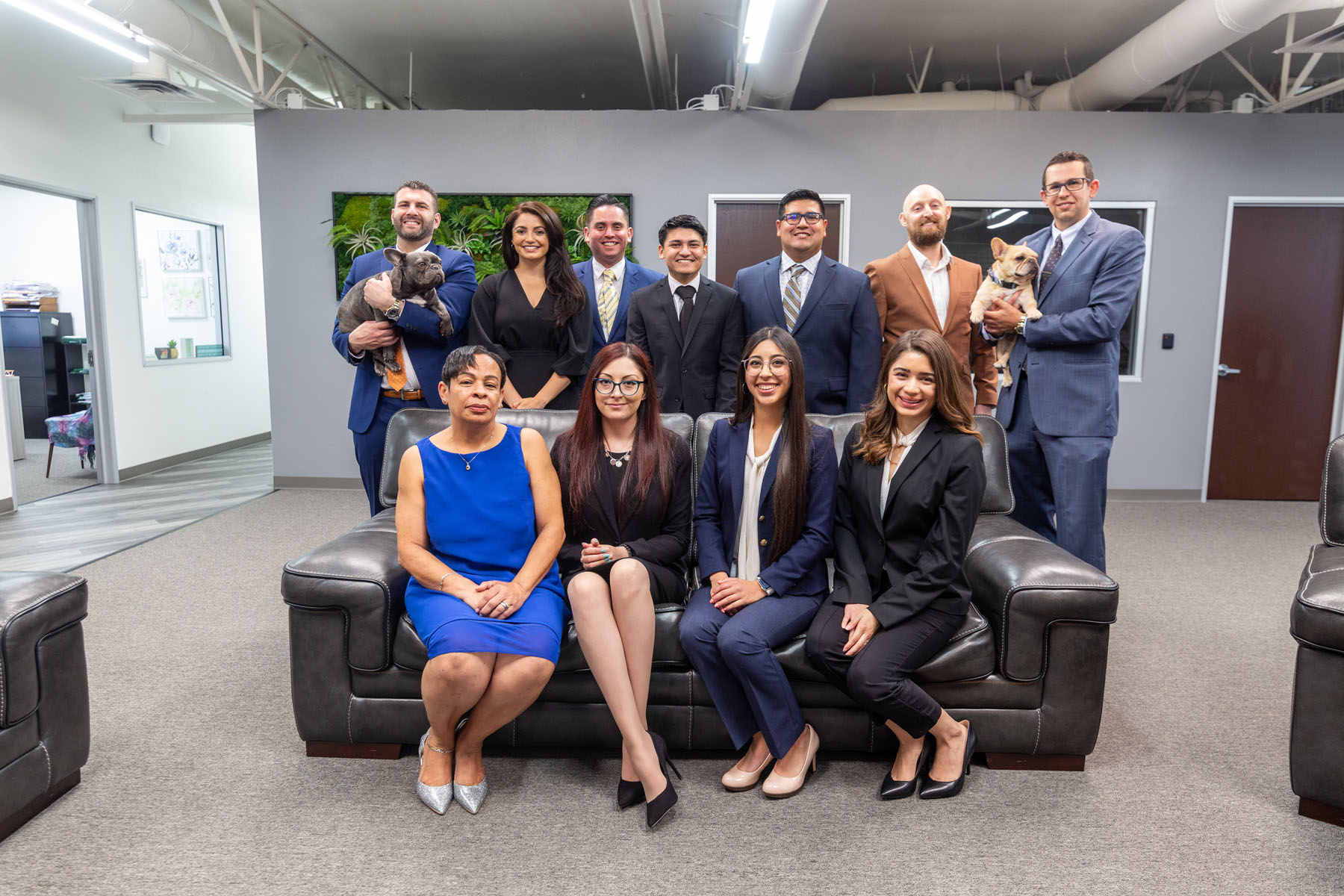Pedestrian accidents are largely left unattended or underreported. This is because most pedestrians decide not to report their accident to the police. However, based on recent statistics, the number of pedestrian fatalities is now at its highest level in almost three decades.
In 2018, 6,227 pedestrians died in road fatalities marking a four percent increase from the 5,977 pedestrian fatalities reported in 2017. According to the Governors Highway Safety Association (GHSA), the 2018 figure is 51 percent up on than 2009 figures, and it is the highest rate of recorded pedestrian fatalities since 1990.
Forty-six percent of all pedestrian deaths happened in five states – California (432), Florida (330), Texas (298), and Arizona (125) – despite the fact that the population in these states represents only 33 percent of the US population. States with the lowest recorded number of pedestrian deaths for 2018 include Idaho (4), Rhode Island (4), Wyoming (4), Maine (3), North Dakota (3), Vermont (2), and New Hampshire (1).
The report was based on preliminary data collected in all 50 states plus the District of Columbia. Experts say the 2018 numbers seem to indicate a continuing upward trend in pedestrian fatality statistics.
Who is classed as a pedestrian?
According to the National Highway Traffic Safety Administration (NHTSA) 2017 data fact sheet published in March 2019, a pedestrian is “any person on foot, walking, running, jogging, hiking, sitting, or lying down who is involved in a motor vehicle traffic crash. These exclude people on personal conveyances like roller skates, inline skates, skateboards, baby strollers, scooters, toy wagons, motorized skateboards, motorized toy cars, Segway-style devices, motorized and non-motorized wheelchairs, and scooters for those with disabilities.”
Based on the above definition and common sense, everyone is a pedestrian at one point or another during their day. It doesn’t matter if you own one or several cars, you will still have to walk along a street at some point in the day. Or, if not today, perhaps tomorrow or some other day.
When it comes to dangers lurking on the road, pedestrians are the most vulnerable. The reason being they do not typically wear any protective gear the way motorcycle drivers may wear helmets at a minimum, for example, or undergo any sort of training. They also do not use any form of conveyance which could serve as some sort of protective barrier the way vehicles protect drivers and passengers.

Causes of pedestrian accidents
Although formal studies into the causes of pedestrian accidents still need to be carried out, the GHSA cited the increasing number of sport utility vehicles (SUVs) a contributory factor to the rise in crashes. In fact, the GHSA report shows that even though passenger car-related fatal pedestrian crashes still make up the majority, the number of pedestrian deaths involving SUVs has significantly increased, rising by 50 percent (based on 2013 to 2017 figures). Those involving passenger cars increased by 30 percent.
Another culprit for the increasing incidence of pedestrian accidents cited by the GHSA is the growth in smartphone use. Many road users, especially drivers, have reported being distracted by their smartphones, even with the availability of hands-free Bluetooth features.
Other factors mentioned in the GHSA report include population growth – i.e. states that experienced high population growth also reported the most cases of pedestrian deaths – as well as unfriendly infrastructure, and unsafe driving behaviors.
Risk factors
According to the latest NHTSA fact sheet (2017 statistics), similar conditions prevail in the majority of pedestrian accidents: they happen at night or in the dark (75 percent), along an arterial road (73 percent), in an urban area (80 percent).
However, aside from these commonalities, the following conditions or factors may increase your risk of being involved in a pedestrian accident.
- Time of day and day of the week: Most pedestrian accidents occur, on average, between 6:00 pm and 8:59 pm (26 percent), and between 9:00 pm and 11:59 pm (24 percent). The majority of pedestrian accidents happen on weekends, with 27 percent happening within the 6:00 pm to 8:59 pm timeframe, and 30 percent within the 9:00 pm to 11:59 pm timeframe.
- Age: People within the 50-54 and 55 -59 age groups make up the most at risk group for pedestrian traffic fatalities at 21 percent. Moreover, people aged 65 and above account for 20 percent of all pedestrian fatalities. Among children aged 14 and below, about 19 percent killed in traffic-related incidents died in pedestrian accidents.
- Gender: Majority of pedestrian fatalities in traffic crashes are males (70 percent) or 2.60 per 100,000 (population); the rate is 1.07 per 100,000 (population) for females. When classified by age group and gender, the pedestrian fatality rate for males aged 80 and above is 4.55 per 100, 000 (population).
- Alcohol: The data on alcohol takes into account both the pedestrian and/or the driver having consumed alcohol before the recorded crash. It must also be noted that, for all 50 states, the limit for alcohol impairment is a blood alcohol concentration (BAC) of .08 g/dL. Forty-seven percent of pedestrian fatalities involved alcohol. Thirty-two percent of pedestrian crash fatalities involved pedestrians with a BAC of .08 g/dL or more; while 17 percent involved a driver with a .08 g/dL BAC or higher.
- Vehicle type and impact point: Pedestrian accident fatalities involved with single-vehicle crashes comprise 91 percent, while those killed in accidents involving multiple vehicles make up nine percent of the total. Moreover, pedestrian fatalities involving single-vehicle crashes were most likely struck by the front-end of vehicles. On the other hand, the highest percentage of pedestrian fatalities involving right-side and rear impacts came from large trucks.
Outside of the NHTSA report, there are other common factors that contribute to pedestrian accidents:
- Speed: The faster a vehicle is going, the more difficult it is for the driver to avoid possible collisions with other vehicles or pedestrians on the road, or come to a controlled stop.
- Aggressive driving: Many pedestrian accidents in cities arise from aggressive driving. Aggressive drivers are more likely to disobey traffic signals and exhibit road rage behaviors that result in speeding or unlawful turning, thereby increasing the risk of hitting or injuring a pedestrian.
- Pedestrian lanes or crosswalks: Pedestrians usually assume (and understandably so) that drivers will slow down or stop when they are using the correct lane or crosswalk. However, data from the U.S. Federal Highway Administration show that “pedestrian-related conditions remain the same, regardless of whether a crosswalk is used.”
- Gadget use: The irresponsible use of gadgets is known to lead to distracted driving. Drivers who are inattentive to what is going on around them because they are on the phone may fail to notice stop signs and other road signs. Moreover, they increase their risk of running over a pedestrian or colliding with another vehicle, tree, wild animal, or road obstruction. Gadget use among pedestrians can also be a factor in collisions.
- General inattention: This goes beyond the use of gadgets. Accidents can also happen if the pedestrian and the driver are looking in different directions, or are generally distracted. Additionally, accidents involving left-hand turns occur three times higher than those involving right turns. Pedestrians are also known to listen for sounds from oncoming vehicles and may fail to look at both sides of the road if they do not hear an approaching vehicle. This means they can get hit by vehicles with quiet engines such as hybrid or electric cars. Ironically, when these quiet types of vehicles move slowly, the likelihood of pedestrian accidents occurring increases. Another common problem involving inattention is when a car backs up and accidentally collides with a child. Most accidents in public parking lots and residences involving kids happen when a car is backing up a driveway, and the driver doesn’t notice a child is playing or present. Rearview cameras are supposed to address this issue, however, but should not be relied upon as a failsafe solution.
- Blatant disregard of traffic signs and signals: Some drivers and pedestrians knowingly disobey stop signs and other road or street signs, sometimes because of overconfidence and the belief that they “know better”. It is a fatal mix when one party is following traffic rules but the other one doesn’t such as when a car goes with a green light but a pedestrian insists on ignoring their own red or stoplight.
- Visibility issues: In the NHTSA report, darkness was cited as a major causal factor in pedestrian accidents. To add to this, poor visibility can happen when it is foggy or heavy rain or snow is obscuring the road ahead. Slippery conditions can complicate this issue as well. Especially during the winter season, a driver may not immediately notice a pedestrian and be unable to slow down in time to avoid an accident. Moreover, even in the absence of fog, rain or snow, poor lighting, coupled with pedestrians wearing dark-colored clothes, can also be a fatal mix.
Duty of Care
Based on annual NHTSA data, thousands of pedestrians are victims of motor vehicle-related accidents resulting in death or injury – and these are only the ones that get reported.
As a pedestrian, every time you step outside your home and walk along the streets or roads, or come near or around parked or moving vehicles, the risk of injury is always present. There are times when the vehicle driver is the one at fault, and there are also instances when the pedestrian turns out to be the negligent party.
However, basic road courtesy tells us that both parties have duties towards one another, known as the duty of care:
- Driver’s Duty of Care: As the driver, you are the one behind the wheel. The moment you drive out of your residence or garage, the decision to drive safely and responsibly is in your hands. After receiving your license, you are expected to exercise reasonable care at all times, while on the road. If you are distracted, inattentive, drunk driving, or driving beyond the speed limit, or if you disobey traffic rules and regulations, fail to give way to pedestrians, and cause an accident, you may end up facing a negligence suit. Reasonable care does not only involve obeying traffic rules and driving within speed limits. You also need to be extra attentive to specific driving situations, such as when you are driving through a school zone or residential area. Driving slowly may not be enough to prevent you colliding with children who dart across the streets. You need to exercise patience and consideration as well.
- Pedestrian’s Duty of Care: As a pedestrian, you are also expected to practice reasonable care for your own safety and that of others. If you wind up in an accident after trying to beat the pedestrian red light, you may be identified as having committed contributory negligence. This means you contributed to your own injury. The same goes for people who refuse to use sidewalks even when they are available, or there is enough space to accommodate them.

Determining fault in pedestrian accident cases
There are certain accident scenarios that clearly indicate when the driver is at fault for hitting or injuring a pedestrian. Beating the red light, speeding, not slowing down or stopping at a crosswalk, and making a turn on a red light are examples of such accident scenarios.
However, pedestrians are often deemed to be in a better position to prevent their injury or involvement in pedestrian accident cases. The reason being that car crashes involving pedestrians often occur along roadways, and not so much on sidewalks or crosswalks. In such cases, it falls on the pedestrian to decide whether or not to leave the sidewalk and enter a roadway.
Determining who is in the right from a legal standpoint involves the law of negligence. This way, the fault in accidents involving vehicles and pedestrians is determined after investigation. Whichever party is found to not have exercised reasonable care leading to the accident will be considered at fault.
There are cases when both the pedestrian and the driver are found to be at fault so they may share the burden of negligence. However, decisions involving shared fault or negligence may vary from one state to another.
Do you need assistance regarding a pedestrian accident?
If you or someone you know has been recently involved in a pedestrian accident or is thinking of filing a lawsuit regarding the same, get in touch with us at Batta Fulkerson.
We’re ready to answer your questions and ready to help.




